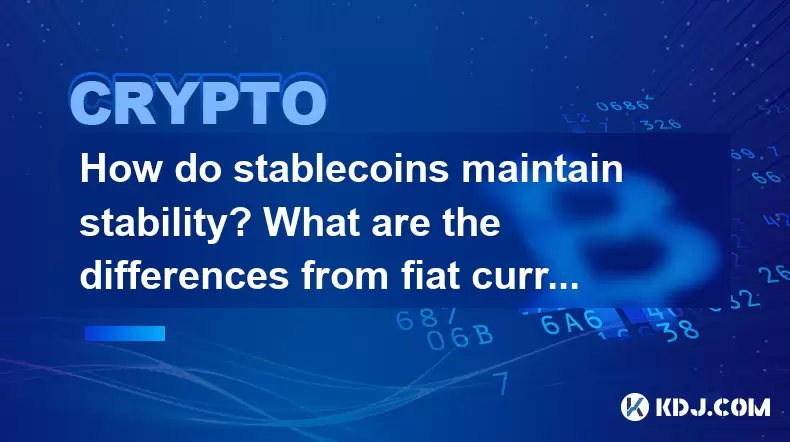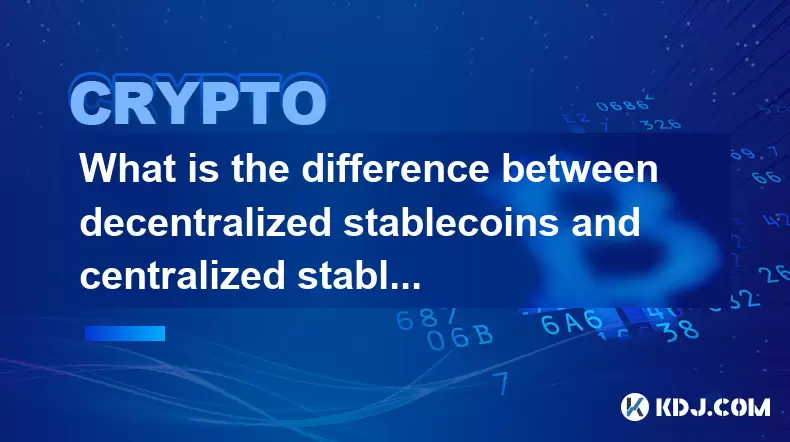-
 Bitcoin
Bitcoin $117900
0.31% -
 Ethereum
Ethereum $3766
0.28% -
 XRP
XRP $3.176
-0.31% -
 Tether USDt
Tether USDt $1.000
0.00% -
 BNB
BNB $795.6
1.51% -
 Solana
Solana $186.8
-1.09% -
 USDC
USDC $0.9999
-0.01% -
 Dogecoin
Dogecoin $0.2353
-1.33% -
 TRON
TRON $0.3226
1.49% -
 Cardano
Cardano $0.8172
-1.08% -
 Sui
Sui $4.178
3.06% -
 Hyperliquid
Hyperliquid $43.05
-3.39% -
 Stellar
Stellar $0.4367
-0.57% -
 Chainlink
Chainlink $18.62
1.47% -
 Hedera
Hedera $0.2828
6.63% -
 Bitcoin Cash
Bitcoin Cash $584.7
5.65% -
 Avalanche
Avalanche $24.81
2.53% -
 Litecoin
Litecoin $112.8
-0.88% -
 UNUS SED LEO
UNUS SED LEO $8.975
-0.08% -
 Shiba Inu
Shiba Inu $0.00001395
-1.07% -
 Toncoin
Toncoin $3.285
-1.05% -
 Ethena USDe
Ethena USDe $1.001
0.01% -
 Polkadot
Polkadot $4.123
0.76% -
 Uniswap
Uniswap $10.49
-0.18% -
 Monero
Monero $326.5
0.14% -
 Dai
Dai $0.9999
-0.02% -
 Bitget Token
Bitget Token $4.576
0.34% -
 Pepe
Pepe $0.00001247
-1.55% -
 Cronos
Cronos $0.1400
3.77% -
 Aave
Aave $295.1
-0.73%
How do stablecoins maintain stability? What are the differences from fiat currencies?
Stablecoins maintain stability through collateralized, algorithmic, and hybrid models, each using unique mechanisms to peg their value to stable assets like the US dollar.
May 31, 2025 at 01:50 am

Stablecoins have emerged as a crucial component of the cryptocurrency ecosystem, offering a bridge between the volatility of traditional cryptocurrencies like Bitcoin and the stability of fiat currencies. How do stablecoins maintain stability? This question is pivotal for understanding the mechanics behind these digital assets. Stablecoins achieve their stability through various mechanisms, which can be broadly categorized into collateralized, algorithmic, and hybrid models. Each method has its unique approach to maintaining a peg to a stable asset, typically the US dollar.
Collateralized Stablecoins
Collateralized stablecoins are the most straightforward type of stablecoin. They maintain their value by being backed by reserves of an asset, which could be fiat currency, other cryptocurrencies, or commodities like gold. The most common type is fiat-collateralized stablecoins, where each coin is backed by an equivalent amount of fiat currency held in reserve.
Fiat-collateralized stablecoins: These stablecoins are pegged to a fiat currency like the US dollar. Examples include Tether (USDT) and USD Coin (USDC). The stability mechanism here is simple: for every stablecoin in circulation, there is an equivalent amount of fiat currency held in reserve. This reserve is typically held in bank accounts or money market funds, ensuring that the stablecoin can be redeemed for its pegged value at any time.
Crypto-collateralized stablecoins: These stablecoins are backed by other cryptocurrencies, often over-collateralized to account for the volatility of the backing assets. An example is DAI, which is backed by Ethereum. To maintain the peg, users deposit more Ethereum than the value of DAI they wish to mint, creating a buffer against price fluctuations.
Commodity-collateralized stablecoins: These are backed by physical assets like gold. An example is Pax Gold (PAXG), where each token represents one ounce of gold. The stability here comes from the value of the underlying commodity, which is generally less volatile than cryptocurrencies.
Algorithmic Stablecoins
Algorithmic stablecoins do not rely on any collateral. Instead, they use algorithms to control the supply of the stablecoin to maintain its peg. This method is more complex and relies on the market's trust in the algorithm's ability to manage supply and demand effectively.
Seigniorage-style stablecoins: These stablecoins adjust their supply based on market conditions. When the price of the stablecoin rises above the peg, the algorithm increases the supply to bring the price down. Conversely, if the price falls below the peg, the algorithm reduces the supply. An example is Ampleforth (AMPL), which adjusts its supply daily based on the previous day's price deviation from the peg.
Rebase stablecoins: These stablecoins periodically adjust the number of tokens each holder owns, rather than changing the total supply. This "rebase" mechanism aims to keep the price stable. An example is Basis Cash (BAC), which adjusts the number of tokens in users' wallets to maintain the peg.
Hybrid Stablecoins
Hybrid stablecoins combine elements of both collateralized and algorithmic models. They aim to leverage the strengths of both approaches to achieve greater stability and efficiency.
- Hybrid stablecoins: These stablecoins use a combination of collateral and algorithmic adjustments to maintain their peg. An example is Frax (FRAX), which is partially backed by collateral (like USDC) and partially managed by an algorithm that adjusts the supply of unbacked tokens. This hybrid approach aims to provide the stability of collateralized stablecoins with the flexibility of algorithmic stablecoins.
Differences from Fiat Currencies
While stablecoins aim to mimic the stability of fiat currencies, there are significant differences between the two. What are the differences from fiat currencies? Understanding these differences is crucial for anyone looking to use or invest in stablecoins.
Backing and Issuance: Fiat currencies are issued by central banks and backed by the full faith and credit of the issuing government. Stablecoins, on the other hand, are issued by private entities and can be backed by various assets or algorithms. This means that the stability of a stablecoin depends on the integrity and solvency of the issuing entity, rather than a government's economic policies.
Transparency and Auditability: Fiat currencies are subject to rigorous regulatory oversight and regular audits by government agencies. Stablecoins, particularly those issued by private companies, may not always provide the same level of transparency and auditability. While some stablecoins like USDC undergo regular audits, others like Tether have faced scrutiny over the transparency of their reserves.
Accessibility and Use Cases: Fiat currencies are widely accepted for everyday transactions and are the primary medium of exchange in most economies. Stablecoins, while increasingly used in the cryptocurrency ecosystem for trading and as a store of value, have yet to achieve the same level of acceptance in mainstream commerce. However, they offer unique use cases such as fast, borderless transactions and integration with decentralized finance (DeFi) platforms.
Volatility and Risk: While stablecoins aim to minimize volatility, they are not entirely immune to it. Factors such as the solvency of the issuing entity, market confidence in the backing assets, and the effectiveness of the stabilizing mechanisms can all impact the stability of a stablecoin. Fiat currencies, while subject to inflation and economic policies, generally experience less volatility than cryptocurrencies.
Mechanisms for Maintaining Stability
Mechanisms for maintaining stability vary depending on the type of stablecoin, but all aim to keep the value of the stablecoin pegged to a stable asset. Here are some key mechanisms used:
Reserve Management: For collateralized stablecoins, effective reserve management is crucial. This involves maintaining the required ratio of backing assets to issued stablecoins and ensuring that these assets are securely held and easily accessible for redemption.
Supply Adjustment: Algorithmic and hybrid stablecoins use supply adjustment mechanisms to maintain their peg. This can involve minting new tokens to increase supply or burning tokens to reduce supply, depending on whether the price is above or below the peg.
Arbitrage: Many stablecoin systems rely on arbitrage to maintain their peg. If the price of a stablecoin deviates from its peg, traders can buy or sell the stablecoin to profit from the difference, thereby helping to bring the price back to the peg.
Rebasing: As mentioned earlier, some algorithmic stablecoins use rebasing to adjust the number of tokens in circulation. This mechanism aims to keep the price stable by automatically adjusting the supply based on the deviation from the peg.
Challenges and Risks
Despite their design to maintain stability, stablecoins face several challenges and risks. Understanding these can help users and investors make informed decisions.
Regulatory Risk: Stablecoins operate in a regulatory gray area in many jurisdictions. Changes in regulations could impact their operation, stability, and acceptance. For instance, if a government decides to ban stablecoins or impose strict regulations, it could affect their usability and value.
Counterparty Risk: For collateralized stablecoins, there is always the risk that the issuing entity may not hold the promised reserves or may be unable to honor redemptions. This risk is particularly acute for stablecoins that lack transparency or regular audits.
Algorithmic Risk: Algorithmic stablecoins rely on the effectiveness of their algorithms to maintain the peg. If the algorithm fails to respond correctly to market conditions, it could lead to significant price deviations and potential collapse.
Market Confidence: The stability of any stablecoin ultimately depends on market confidence. If users lose faith in the stability mechanism or the backing assets, it could lead to a run on the stablecoin, causing its value to plummet.
Frequently Asked Questions
Q: Can stablecoins be used for everyday transactions like fiat currencies?
A: While stablecoins are increasingly accepted by some merchants and platforms, they are not yet widely used for everyday transactions like fiat currencies. Their primary use cases are within the cryptocurrency ecosystem, such as trading on exchanges and participating in DeFi platforms.
Q: Are all stablecoins pegged to the US dollar?
A: No, while many stablecoins are pegged to the US dollar, others can be pegged to different fiat currencies, cryptocurrencies, or commodities like gold. The choice of peg depends on the design and purpose of the stablecoin.
Q: How can I verify the reserves of a collateralized stablecoin?
A: To verify the reserves of a collateralized stablecoin, you can look for regular audits and transparency reports published by the issuing entity. Some stablecoins, like USDC, provide monthly attestations of their reserves by independent auditors, which can be found on their official websites.
Q: What happens if an algorithmic stablecoin loses its peg?
A: If an algorithmic stablecoin loses its peg, the algorithm will attempt to adjust the supply to bring the price back to the peg. However, if the market loses confidence in the algorithm's ability to do so, it could lead to a significant price deviation and potential collapse of the stablecoin.
Disclaimer:info@kdj.com
The information provided is not trading advice. kdj.com does not assume any responsibility for any investments made based on the information provided in this article. Cryptocurrencies are highly volatile and it is highly recommended that you invest with caution after thorough research!
If you believe that the content used on this website infringes your copyright, please contact us immediately (info@kdj.com) and we will delete it promptly.
- Cryptos to Watch in 2025: Punisher Coin, Chainlink, and the Altcoin Arena
- 2025-07-27 18:30:13
- Bitcoin, Altcoins, Rebound: Navigating the Crypto Comeback Trail
- 2025-07-27 18:30:13
- Ethereum, Bitcoin, and Altcoins: A Shift in Crypto Tides?
- 2025-07-27 19:10:13
- Windtree Therapeutics' Bold BNB Strategy: A $520 Million Crypto Play
- 2025-07-27 19:10:13
- Solana, Staking, and Unilabs: What's the Buzz in the Crypto Space?
- 2025-07-27 16:50:13
- VeChain, HBAR, Remittix: Navigating the Crypto Landscape in 2025
- 2025-07-27 17:10:12
Related knowledge

What is the difference between decentralized stablecoins and centralized stablecoins? Pros and cons comparison
Jun 15,2025 at 09:42am
What Are Stablecoins and Why Do They Matter?Stablecoins are a category of cryptocurrencies designed to maintain a stable value, usually pegged to an e...

What is the role of stablecoins in DeFi? Advantages and limitations analysis
Jun 14,2025 at 06:28am
Understanding Stablecoins in the DeFi EcosystemStablecoins play a pivotal role in the decentralized finance (DeFi) landscape by providing a bridge bet...

How do algorithmic stablecoins work? Potential risks and market impact
Jun 12,2025 at 02:07pm
Understanding Algorithmic StablecoinsAlgorithmic stablecoins are a type of cryptocurrency designed to maintain a stable value relative to a specific a...

How do stablecoins anchor legal currencies? Technical and economic model analysis
Jun 16,2025 at 08:43am
Understanding the Concept of StablecoinsStablecoins are a category of cryptocurrencies designed to maintain a stable value relative to a specific asse...

How do stablecoins maintain price stability? Principles and risk analysis
Jun 11,2025 at 12:01am
Understanding the Mechanisms Behind Stablecoin StabilityStablecoins are a category of cryptocurrencies designed to minimize price volatility, often pe...

What is the operating mechanism of stablecoins? In-depth exploration of its stability principle
Jun 10,2025 at 09:28pm
Understanding the Core Concept of StablecoinsStablecoins are a unique category within the cryptocurrency market, designed to address one of the most s...

What is the difference between decentralized stablecoins and centralized stablecoins? Pros and cons comparison
Jun 15,2025 at 09:42am
What Are Stablecoins and Why Do They Matter?Stablecoins are a category of cryptocurrencies designed to maintain a stable value, usually pegged to an e...

What is the role of stablecoins in DeFi? Advantages and limitations analysis
Jun 14,2025 at 06:28am
Understanding Stablecoins in the DeFi EcosystemStablecoins play a pivotal role in the decentralized finance (DeFi) landscape by providing a bridge bet...

How do algorithmic stablecoins work? Potential risks and market impact
Jun 12,2025 at 02:07pm
Understanding Algorithmic StablecoinsAlgorithmic stablecoins are a type of cryptocurrency designed to maintain a stable value relative to a specific a...

How do stablecoins anchor legal currencies? Technical and economic model analysis
Jun 16,2025 at 08:43am
Understanding the Concept of StablecoinsStablecoins are a category of cryptocurrencies designed to maintain a stable value relative to a specific asse...

How do stablecoins maintain price stability? Principles and risk analysis
Jun 11,2025 at 12:01am
Understanding the Mechanisms Behind Stablecoin StabilityStablecoins are a category of cryptocurrencies designed to minimize price volatility, often pe...

What is the operating mechanism of stablecoins? In-depth exploration of its stability principle
Jun 10,2025 at 09:28pm
Understanding the Core Concept of StablecoinsStablecoins are a unique category within the cryptocurrency market, designed to address one of the most s...
See all articles

























































































